15 Danish Desserts That Taste Like ‘Hygge’
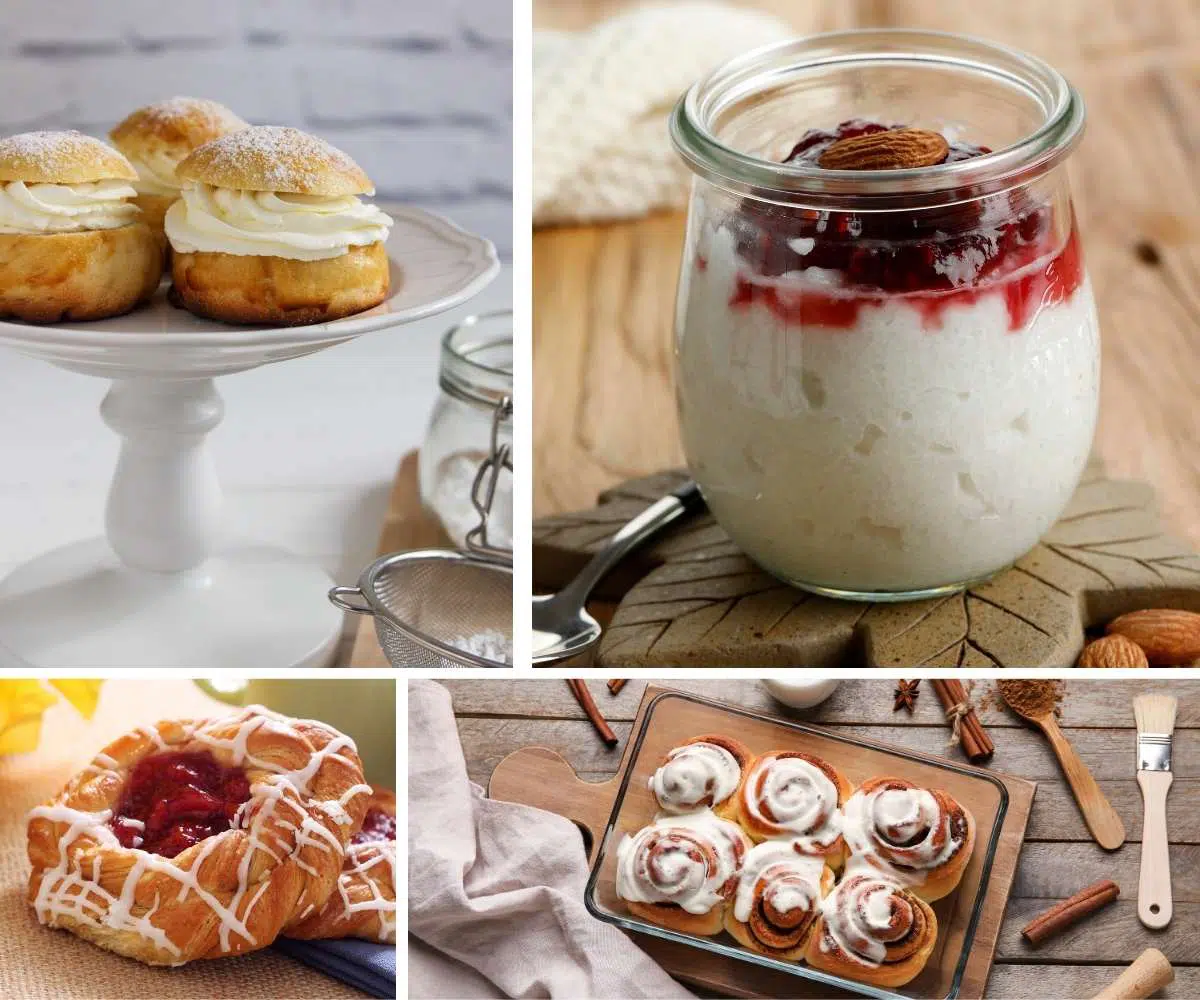
Maybe you’ve heard of the Danish concept of hygge? It means coziness and it’s an inherent part of the Danish mentality. It means enjoying the small joys of life and spending time with family and loved ones in a cosy, relaxed setting.
If you ask a Dane, they will tell you that one of the best ways of creating hygge is by enjoying something sweet together! Here’s a list of some delicious Danish desserts that will give you a true sense of Danish hygge.
1. Rødgrød med Fløde: Red Berry Pudding
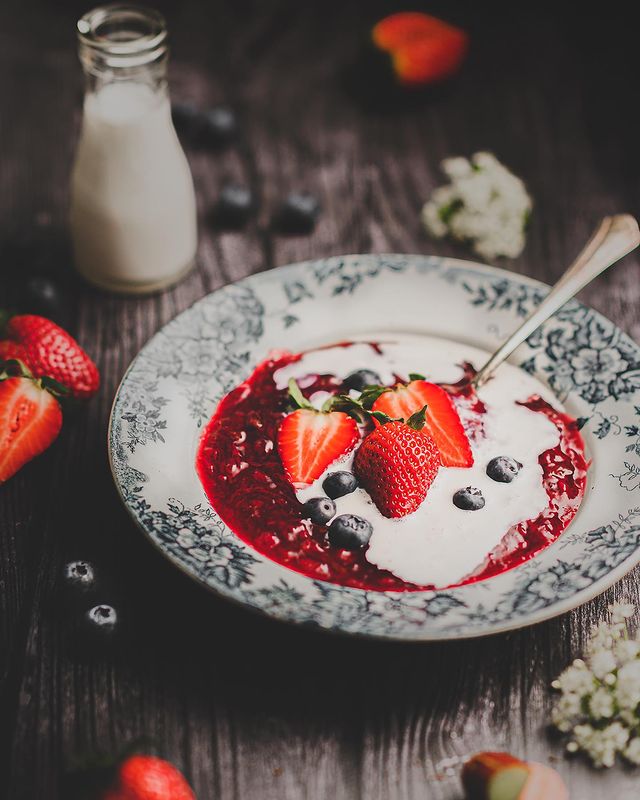
Danes delight in getting non-natives to pronounce this dessert. They are teasing, because it is almost impossible to get right. But while getting the words rødgrød med fløde (red porridge with cream) out may be a challenge, tasting the dessert is a straightforward delight for both Danes and foreigners.
The pudding is usually made with a mix of strawberries, raspberries, blackcurrants, and redcurrants, ideally picked from your own garden, and served with heavy cream to compliment the fresh taste of the red berries.
2. Wienerbrød: Vienna Bread

Ironically, the famous Danish pastry is actually called Vienna bread in Denmark. That’s because the technique for making the Danish pastry was brought to Denmark by Austrian bakers in the 19th century.
Since then the pastry has gradually been adjusted to the Danish taste and tradition, becoming the sweet multi-layered pastry we know today.
Usually the pastry is either filled with custard or jam and topped with either white or chocolate flavoured icing. Just perfect for coffee, or tea-time, in any setting. But beware, you’ll have crumbs all over the place after eating them!
3. Koldskål med Kammerjunkere: Cold Buttermilk Soup

The name of this dessert literally translates as cold bowl with chamberlains, but it actually refers to a creamy cold buttermilk soup with crumbled biscuits.
This modest but very tasty dessert is known and celebrated in Denmark as a real summertime treat. It’s not too sweet, which makes it perfect not only as a dessert but also as a refreshing snack in between meals on hot summer days.
You make it by whisking together egg yolks, sugar, vanilla, and lemon with buttermilk and yoghurt. To add some extra freshness, some people enjoy the dish with strawberries or elderflower.
The so-called chamberlain biscuits, which are used for the topping, are a special kind of double-baked, crispy butter cookies with a bit of lemon zest. Chamberlains are essential to this dessert, and they are very popular in Denmark, but it’s very rare that they are eaten separately from the cold butternutmilk soup.
4. Brunsviger Cake

This classic Danish cake originates from the island Funen, where the famous author Hans Christian Andersen was born. The people of Funen are very proud to serve it for any occasion. It’s more like a yeast dough bread with a sticky brown sugar topping than an actual cake, but that doesn’t make it any less mouthwatering!
Brunsviger is very popular as a birthday cake for children. The cake is shaped into a cake man or cake woman and decorated with all sorts of colorful candy, such as wine gums and liqorice.
5. Citronmåne: Lemon Moon

Rumor has it that this is the preferred cake of Danish police officers all over the country! You will find this half-moon shaped lemon pound cake with yellow icing on the shelves of any supermarket or petrol station in Denmark.
It almost has iconic status amongst Danes, known and appreciated as a simple, cheap, ready-made cake for afternoon coffee.
Invented by a Danish cake company in the middle of the 20th century and wrapped up in plastic, it may not be the most glamourous cake in the history of Danish baking, but it’s definitely worth tasting. And if you choose to bake it yourself, it’s even more worth it.
The lemon moon is easy to bake, and by adding plenty of fresh lemon juice and lemon zest, you get a really juicy, scrumptious texture.
6. Æblekage: Danish Apple Cake
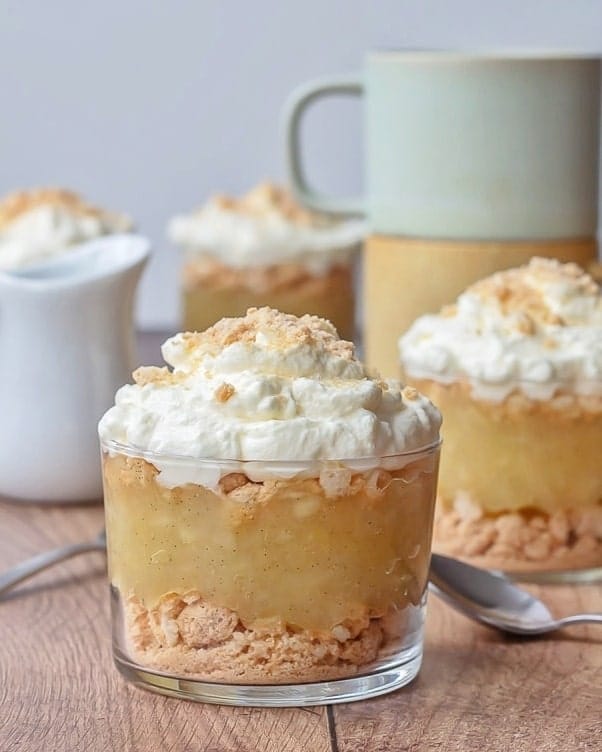
For some reason the Danes call this dessert an apple cake, but it’s actually more like a trifle. The layers consist of apple purée (or alternatively, just grated apple), crumble, and whipped cream. The crispy crumble part comes in many different variations. Some make it with crushed macaroons, others prefer sweet bread crumbs, crumbled biscuits or toasted oats.
Most Danes will argue that the way their grandmother makes it is the only right way. But they will agree for sure that this classic, homely dessert encapsulates the taste of autumn in Denmark.
7. Risalamande: Rice Pudding with Cherry sauce

The name risalamande originates from the French riz á l’amande, meaning rice with almonds. The pudding was invented in the 19th century by a Danish five star hotel chef who believed it would sound more posh with a French name. Since then it has become the most famous traditional Danish Christmas dessert.
The pudding is made from cold rice porridge with vanilla, whipped cream, and crushed almonds, and it’s served with a flavorful warm cherry sauce.
In Denmark it’s eaten after dinner on Christmas Eve, and an important part of the tradition is to hide one whole almond in the dessert. The one who gets the almond wins a small present.
8. Brunkager: Brown Cookies

Here’s another classic Danish Christmas tradition. These spicy brown gingerbread cookies are only eaten through the month of December, and when you bake them, your house fills with the most authentic smell of Danish Christmas coziness: cinnamon, cloves, ginger, and allspice… yummy!
First you make a thick, dark syrup of butter and brown sugar. Then you mix in with flour, spices, and sliced almonds and leave the dough in a cool place until the next day.
When the dough is cold and hard, you cut it into slim slices. The traditional Danish cookies are baked with potassium carbonate, and the result is crispy and dark brown.
9. Kransekage: Marzipan Wreath Cake
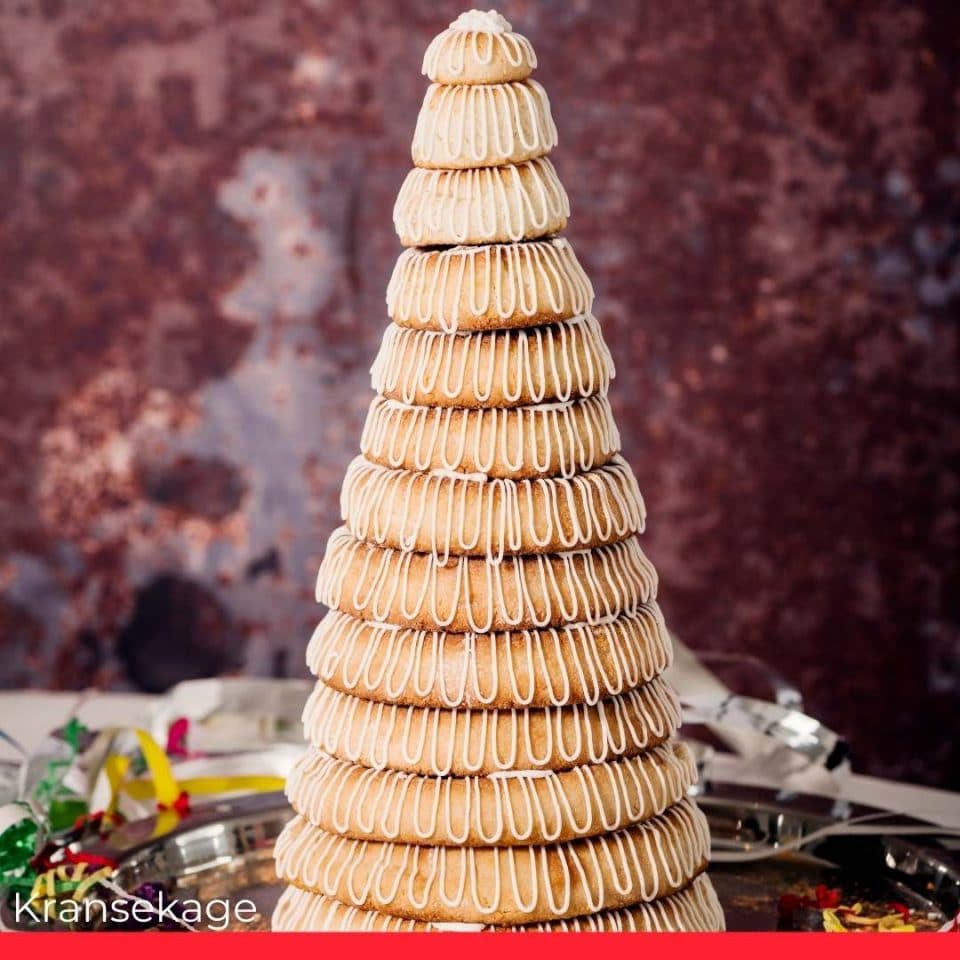
At midnight on New Year’s Eve, Danes celebrate the turn of the year by drinking champagne and eating kransekage. Kransekage means wreath cake, and it’s made of stacked rings of baked marzipan built into a tower, neatly decorated with thin white stripes of royal icing. The icing serves both as glue and garnish for the cake tower.
To make it more luxurious, you can bake the marzipan rings with a core of Viennese nougat. Or, if you want to make a simpler version, you can also just form the marzipan into straight bars and serve them as they are. In that case they are usually dipped in dark chocolate.
Editor’s Note: Kransekage (spelled kransekake) is a popular dessert in Norway as well.
10. Kartoffelkager: Potato Cakes
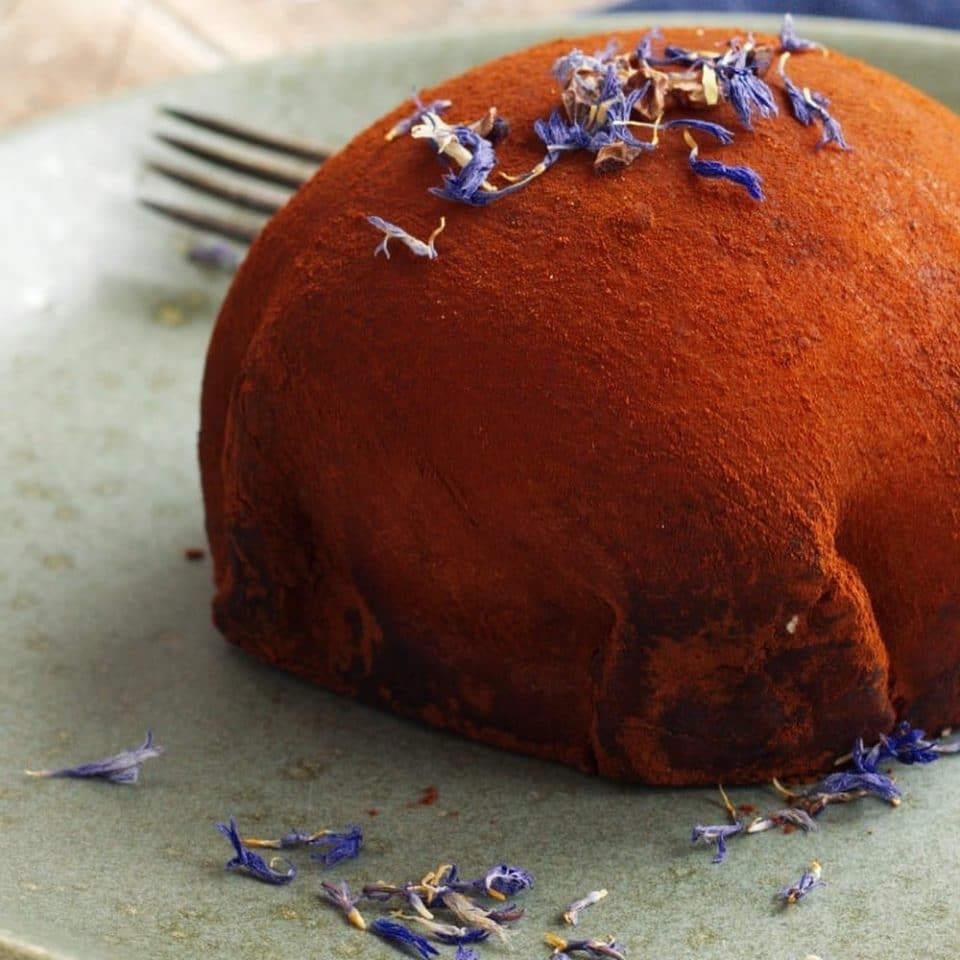
Potato cake may not sound very delicious, but don’t be fooled by the name. It’s only called a potato cake because of the way it looks; there are absolutely no potatoes in it!
You’ll find these potato shaped cream cakes in the windows of almost any Danish bakery, but be warned: If you’re in the mood for a light dessert, this is not for you. It’s a heavy treat made of vanilla sponge cake, vanilla custard, and plenty of whipped cream wrapped in a thick layer of marzipan, powdered with cocoa.
11. Hindbærsnitter: Raspberry Slices

Here’s another popular cake for Danish afternoon coffee, and this one is not as heavy as potato cake! The hindbærsnitte is like a little flat sandwich made of short crust pastry and raspberry jam, topped with icing and tutti-frutti sprinkles. Simple, tasty and also very child-friendly because it is so colorful.
12. Fastelavnsboller: Danish Carnival Buns

This delicious cream bun is a part of the Danish carnival fastelavn, which is celebrated every year in the early spring. It is traditional for kids to dress up in costumes and wake up their parents in the morning singing songs pleading for cream buns: “If we don’t get the buns now, we’ll be naughty!”
The buns come in many versions, and each family has their own way of making them. The homemade carnival buns are usually baked with a core of custard or jam and topped with chocolate-flavored or colored icing.
At the bakeries you’ll find a fancier version based on Danish pastry dough and a huge amount of whipped cream.
Editor’s Note: Fastelavnsboller is a popular dessert throughout the Nordic Region from Norway to Sweden and Estonia.
13. Sarah Bernhardt Cake

Here’s a classic Danish dessert for the more advanced or ambitious cake maker. It was invented in 1911 in Copenhagen by a Danish pastry chef who named his luscious, sweet invention after the famous French Hamlet-actress, Sarah Bernhardt.
The base of the cake is a Danish macaroon which is a very sweet, crispy and airy cookie made of almond flour, sugar, and egg white. It’s filled with a rich chocolate mousse and finally coated in dark chocolate, topped with a few candied violets.
14. Romkugler: Danish Rum Balls
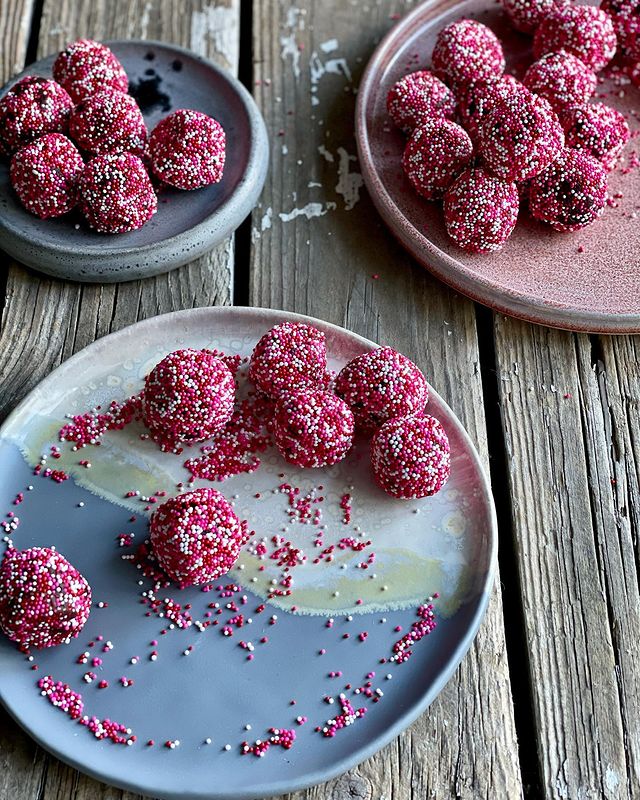
Do you love baking so much that you sometimes have too much leftover cake? Instead of throwing it away, try turning it into delicious Danish rum balls!
Many countries have traditions of making rum balls, but in Denmark you’ll probably find the biggest ones – it’s normal to see them the size of a fist, or even bigger! You definitely won’t be hungry for a while after eating one.
How to make them? Simply put your leftover pastries, cakes, and/or cookies in a food processor and blend it with jam, cocoa powder, and rum essence. Before serving the balls, roll them in chocolate sprinkles, tutti frutti sprinkles or coconut flakes.
15. Kanelsnegle: Cinnamon Rolls

Let’s end this dessert cavalcade with one of the most famous Danish pastries which truly embodies the taste and the smell of Danish hygge: the cinnamon roll.
In Denmark the cinnamon roll is called a snail because of its shape. Most Danish bakeries use puff pastry for their snails, but the homemade version is usually made with a soft yeast dough, which is just as tasty. In both cases the dough is rolled with a filling of butter, brown sugar, and cinnamon.
If you prefer them as sweet and sticky as possible, you can sprinkle some icing on top before serving them. Bon appetit!
Related: 20 Popular Danish Foods
Related: 10 Popular Danish Cheeses

Related: Popular Danish Christmas Food


